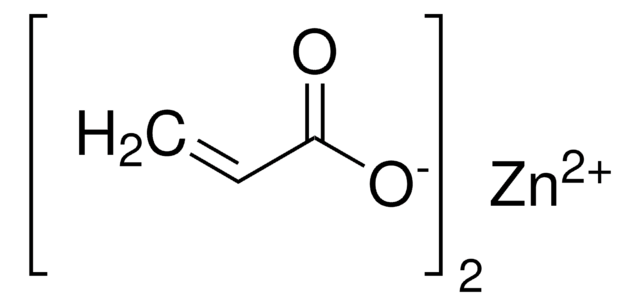Wichtige Dokumente
552348
2-Carboxyethylacrylat
contains 900-1100 ppm MEHQ as inhibitor
Synonym(e):
β-(Acryloyloxy)propionic acid, β-Carboxyethyl acrylate, 3-(Acryloyloxy)propionic acid, 3-Acryloyloxypropanoic acid, Acrylic acid 2-carboxyethyl ester, Acrylic acid dimer
About This Item
Empfohlene Produkte
Enthält
900-1100 ppm MEHQ as inhibitor
Qualitätsniveau
Brechungsindex
n20/D 1.457 (lit.)
pH-Wert
2.95 (10 wt. % in H2O)
bp
103 °C/19 mmHg (lit.)
Löslichkeit
H2O: soluble
Dichte
1.214 g/mL at 25 °C (lit.)
Lagertemp.
2-8°C
SMILES String
OC(=O)CCOC(=O)C=C
InChI
1S/C6H8O4/c1-2-6(9)10-4-3-5(7)8/h2H,1,3-4H2,(H,7,8)
InChIKey
CYUZOYPRAQASLN-UHFFFAOYSA-N
Verwandte Kategorien
Anwendung
Leistungsmerkmale und Vorteile
Signalwort
Danger
H-Sätze
Gefahreneinstufungen
Eye Dam. 1 - Skin Corr. 1B
Lagerklassenschlüssel
8A - Combustible corrosive hazardous materials
WGK
WGK 3
Flammpunkt (°F)
230.0 °F - closed cup
Flammpunkt (°C)
110 °C - closed cup
Persönliche Schutzausrüstung
Faceshields, Gloves, Goggles, type ABEK (EN14387) respirator filter
Hier finden Sie alle aktuellen Versionen:
Besitzen Sie dieses Produkt bereits?
In der Dokumentenbibliothek finden Sie die Dokumentation zu den Produkten, die Sie kürzlich erworben haben.
Kunden haben sich ebenfalls angesehen
Unser Team von Wissenschaftlern verfügt über Erfahrung in allen Forschungsbereichen einschließlich Life Science, Materialwissenschaften, chemischer Synthese, Chromatographie, Analytik und vielen mehr..
Setzen Sie sich mit dem technischen Dienst in Verbindung.







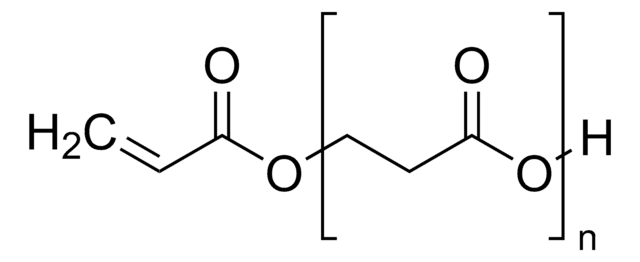
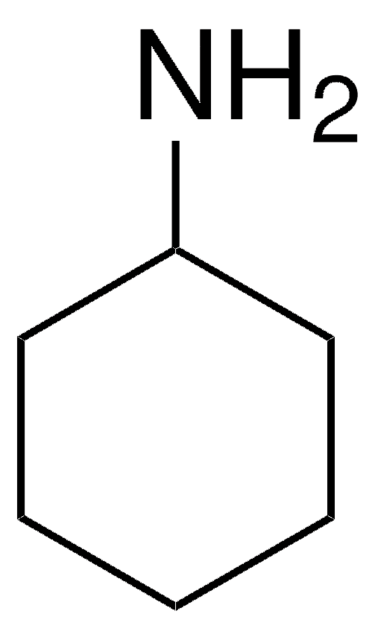

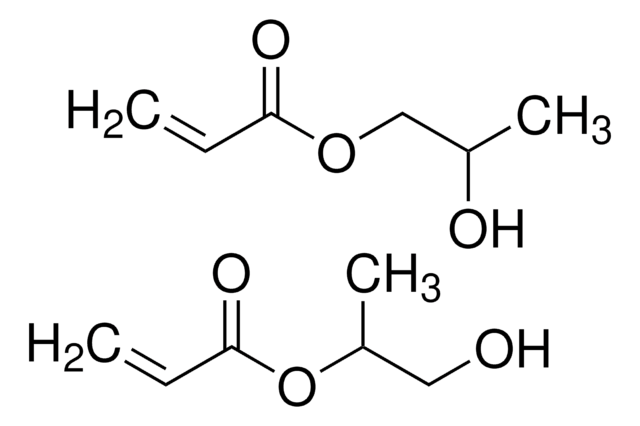

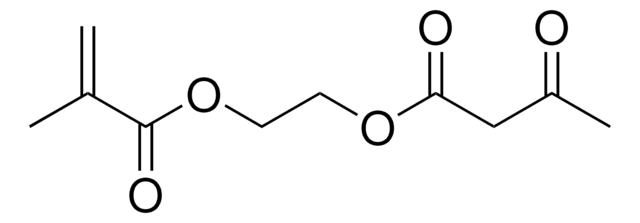
![Bis[2-(methacryloyloxy)ethyl]-Phosphat](/deepweb/assets/sigmaaldrich/product/structures/128/336/4e7a3e38-338c-423e-95b8-70d9d1f8e121/640/4e7a3e38-338c-423e-95b8-70d9d1f8e121.png)

